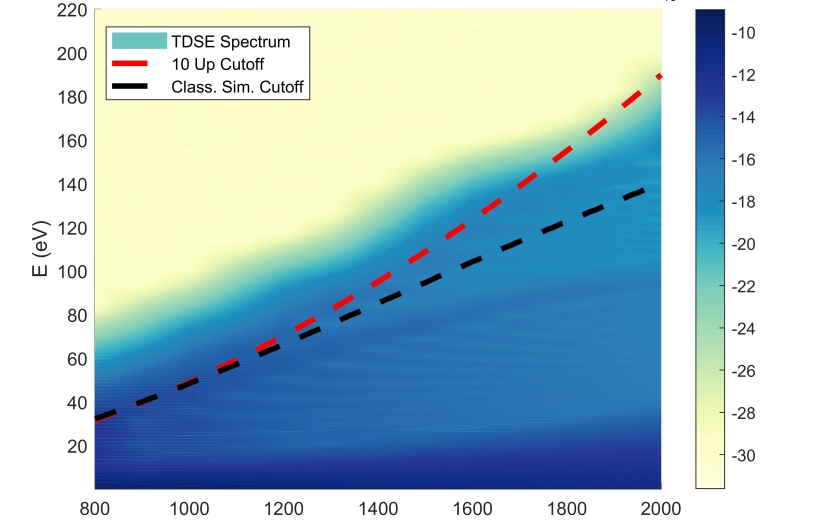Semi-Classical Cutoff Energies for Electron Emission and Scattering at Field-Enhancing Nanostructures with Large Ponderomotive Amplitudes
In the realm of strong laser-field cathode emissions, the emission cutoff energy is commonly quoted as being10Up, 10 times the ponderomotive energy. This classical result utilizes the assumption that the laser field strength is uniform in the dimension perpendicular to the cathode surface. For sufficiently strong and high wavelength fields at nanostructured cathodes the ponderomotive amplitude, or how far the electron travels in its quasi-free motion, may be comparable or larger than the field drop-off scale. In this regime the uniform field assumption is no longer appropriate. In this paper we perform semi-classical calculations of the electron trajectories using non-uniform fields that model nanoblades, nanotips, and a common theoretical exponential field. While similar analyses have been performed before for particular parameters, here we provide parameterized fits as a reference such that a simulation need not be performed for every system.
This work is another step towards our understanding of nanostructured cathodes, which may be an avenue for high brightness electron emissions. Potential applications for these cathodes include ultrafast electron diffraction (UED) and electron guns in general. These results allow us to quickly consider the spectral properties of regimes we have not yet explored, such as with extremely high wavelengths.
One important aspect of our results may be taken from the figure. In our time-dependent Schrödinger equation (TDSE) simulations of the nanoblade system we noticed a deviation between our apparent cutoff and the 10Up cutoff for large wavelengths. Luckily, it is apparent that this discrepancy may be simply explained by the semi-classical motion of the electron in a non-uniform laser field, and it is not due to some more complicated quantum mechanical effect.
Reference:
J. Mann and J. Rosenzweig, “Semi-Classical Cutoff Energies for Electron Emission and Scattering at Field-Enhancing Nanostructures with Large Ponderomotive Amplitudes,” arXiv: 2105.10601 [cond-mat], May 2021 [Online]. Available: http://arxiv.org/abs/2105.10601

